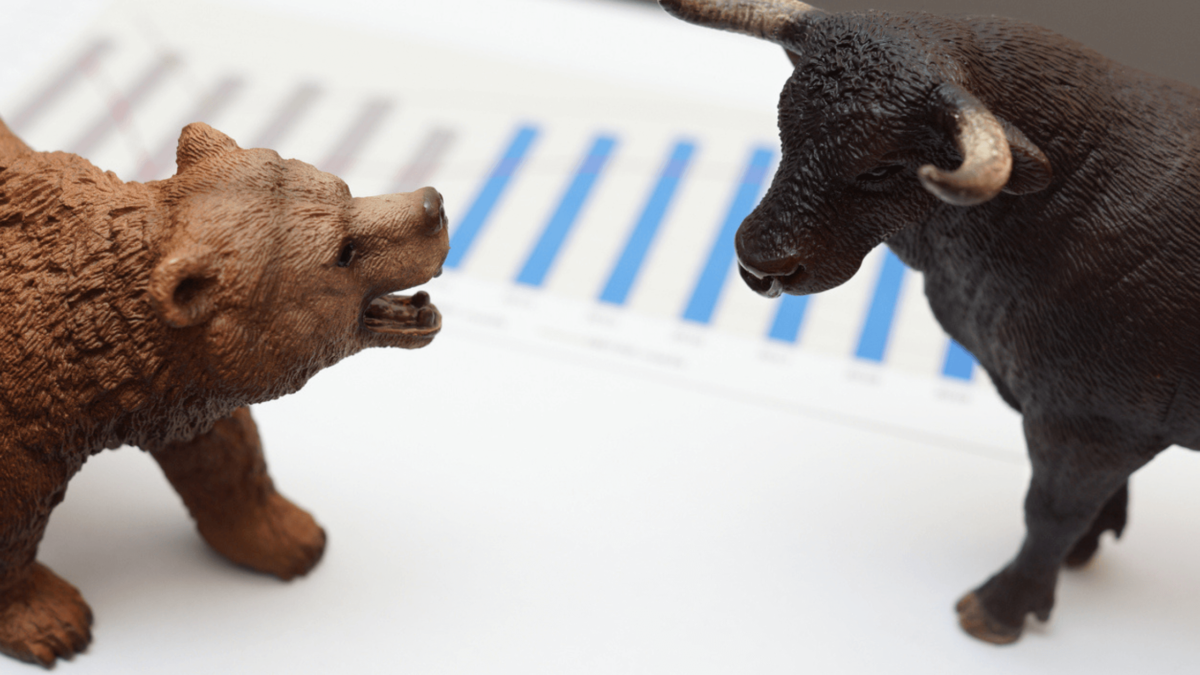Inflation and Recession: Pick Your Market Poison
September 19, 2022

Stock market walls tumble down
The “head fake” rally in US equities, which I warned was unlikely to be sustained, has come crashing down. This saw the S&P 500 Index finish down 4.8% last week.
Meanwhile, the Nasdaq 100 was a bigger wreck, down 5.8%. And the bottom-line is I expect both of them to go much lower.
The S&P 500 Index is headed towards a retest of its June low of 3,636. And the balance of risk suggests it will eventually break below that technical support zone too.
Recently, there was an “OMG” moment for inflation optimists. At the end of the day, it all comes down to inflation and rates.
As I had been suggesting over the months, the market has been too complacent on the inflation and rates risk.
Inflation, once unleashed, is a difficult beast to slay. Indeed, the forces of inflation have a tendency to feed off one another.
And the market may have gotten that moment of realisation and horror last week as it read the August US CPI inflation data.
Inflation had spread beyond commodities and headline inflation. It had gone into services, shelter, and core inflation.
S&P 500 Index continues on the downtrend channel
In the 5 September and 12 September editions of Big Money, I wrote of the technical supports converging on the 3,900-region.
However, I warned that the rebound at this region was unlikely to be sustainable. Technical rebounds such as these were short-term in nature.
As I wrote last week, the fundamentals suggested there was “more downside risk ahead for US and other Developed Market risk assets”. These short cycles were likely to take the market lower on its downtrend channel.
And that’s how the S&P 500 Index unravelled last week, falling below the 23.6% Fibonacci retracement of its entire move from its January high to its June low (see chart below).

Sources: CGS-CIMB Securities, Refinitiv
Beyond this, there is minor technical support around 3,727 and more substantial support at 3,636.
And that is not even likely to be the final destination, if the Fed rate goes beyond the current expected peak rate of 5.0-5.25%.
US corporate credit indices also declined last week on the higher rates expectations.
Market reminded that inflation is hard to kill
The US August CPI inflation data was the catalyst for the resumption of the decline. There was nothing shocking to me about the figures, though.
It seemed more a case of the market unrealistically expecting inflation to fade away quickly, just because commodity prices were easing.
The headline (all items) inflation eased further from 8.5% year-on-year (y/y) in July to 8.3% y/y for August.
And the market would have expected that decline, given the 25% fall in the average US regular gasoline price since late June.
But the market was expecting lower – 8.1% y/y was the consensus. What should be more disturbing for the market is that core inflation rose from 5.9% y/y in July to 6.3% y/y for August.
So, clearly there’s more to this than “transitory” supply factors. To recap, last week, I wrote:
“The idea that this inflation is supply-side driven – caused specifically by energy, food and disrupted supply chain issues that will eventually fix themselves – is over simplified.
We had written in the past about the roots of this inflationary episode being in a combination of the greatest monetary and fiscal stimulus since World War 2, combined with unprecedented supply chain disruptions.
So, there are both demand and supply drivers.”
So, for those in the market who saw the current inflationary episode as a purely supply-driven phenomenon, the August CPI data was not supposed to happen.
The price of West Texas Intermediate crude had fallen from a peak of US$129/barrel in March to US$85/barrel last week.
The average price of US gasoline has fallen 26% from mid-June. The FAO Food Price Index had fallen some 14% from March to August.
Similarly, the global supply chain is reconnecting, with the Global Supply Chain Pressure Index showing a sharp decline. It fell from 4.31 standard deviations above the average value in December last year to 1.47.
Inflation is a beast that feeds on itself
The market may have had a moment of realisation/horror last week – that inflation, once unleashed, is a powerful force that feeds on itself.
What should be disturbing to the market is how the CPI inflation rate for services ex-energy services, the CPI inflation rate for shelter, and the Sticky Core CPI inflation rate have been on a relentless ascent since August of last year.
That’s been despite the retreat in the core CPI inflation rate from March to July (see chart below).

Sources: CGS-CIMB Securities, Federal Reserve Bank of St Louis
The problem is they are now driving core inflation. And the danger here is that they could lead the resumption of the core CPI inflation rate back up from here (see chart below).

Sources: CGS-CIMB Securities, Federal Reserve Bank of St Louis
Some background: “sticky inflation” is the categorisation that the Fed assigns to those items of consumption where price changes occur less frequently than the average in the CPI basket.
The mood on the (overly sanguine) Fed Funds futures market has soured.
The most popular trades in the Fed Funds futures market by last Thursday had repriced the peak Fed Funds Target rate from 4.0%-4.25% to 5.0%-5.25%.
The more interesting part is the market now expects larger rate cuts and sooner than a week ago. It is now expecting a cut of 75 basis points (bp) by March of next year.
Only a week earlier, it was expecting a cut of only 25bp by June next year. This smells like recession fear.
Speaking of recession fears…
The share price plunge of FedEx Corporation (NYSE: FDX) last week seems to be warning us that after the inflation and rate hikes comes recession (see chart below).

Sources: CGS-CIMB Securities, Refinitiv
I suspect FedEx’s share price is a leading indicator for the US Manufacturing PMI.
This is reminiscent of how Deutsche Post AG’s (ETR: DPW) share price decline from December of last year forewarned of the Euro Zone Composite PMI descent into contraction – something which was confirmed in July this year (see chart below).

Sources: CGS-CIMB Securities, Refinitiv
To borrow a line from an old song (from Tennessee Ernie Ford), this battle against inflation and recession is like a fight against a beast with:
“One fist of iron and the other of steel. If the right one don’t get you, then the left one will.”
In other words, stay short. If you can’t short, keep your powder dry. And if you must be invested, buy defensive and value stocks.
Dislcaimer: CGS-CIMB Securities Chief Investment Strategist Say Boon Lim doesn’t own shares of any companies mentioned.
Say Boon Lim
Say Boon Lim is CGS-CIMB's Melbourne-based Chief Investment Strategist. Over his 40-year career, he has worked in financial media, and banking and finance. Among other things, he has served as Chief Investment Officer for DBS Bank and Chief Investment Strategist for Standard Chartered Bank.
Say Boon has two passions - markets and martial arts. He has trained in Wing Chun Kung Fu and holds black belts in Shitoryu Karate and Shukokai Karate. Oh, and he loves a beer!







